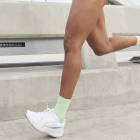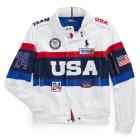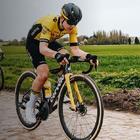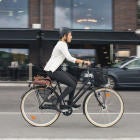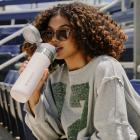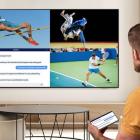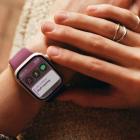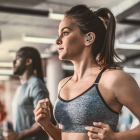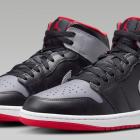
No matter your experience level, choosing the right running shoes for you is hard. Not only is every runner different, but every type of run comes with different demands. From technical runs on gravel trails to tempo runs on pavement, the kind of running you do and the way your feet move when you run will determine whether or not that running shoe everyone loves will work for you, too.
I have a personal favorite, Nike Pegasus 41s, and I'll tell you more about why I keep coming back to that model again and again. But I know what works for me won't work for every runner, so I've compiled this list to include my favorites for other types of running, too, from trail running to racing.
Best daily trainer: Nike Pegasus 41

My daily trainer is a workhorse. I might never run a marathon in them, but they still rack up mileage for me the fastest. After all, they're the shoes that I typically spend the most time in. I like the Nike Pegasus 41 for the job.
Previously, I ran in a pair of Nike Pegasus 40s, but those have become my walking shoes after trying the new Nike Pegasus 41.
The biggest change between the Nike Pegasus 40 and the Nike Pegasus 41 is the switch from React foam to ReactX foam in the midsole. This is the first time Nike has added the upgraded foam to the Pegasus line. It promises over 13% more energy return compared to the React foam in the Pegasus 40.
After running in them, I can say that sounds about right. They felt slightly springier than the previous generation. As much as I enjoyed the comfort of the Pegasus 40s, I did notice that they were a bit heavy and not as responsive as other running shoes. Since I'm predominantly a midfoot striker, I also had trouble activating the Air Zoom units which are located in the heel and forefoot.
While those Air Zoom units haven't moved, the addition of the ReactX foam means I still get decent energy return, even on midfoot strikes. Then, when I switch to heel striking at higher speeds, the Nike Pegasus 41 feels even more propulsive than my Pegasus 40s.
The upper got a complete overhaul as well, making it noticeably lighter, softer and more breathable. I enjoyed the increased flexibility in the upper. It was enough to make my feet feel less restricted without being so flexible as to sacrifice stability.
The redesigned upper also helps make the shoe feel less bulky overall, without getting rid of the padding and structured support around the heel that makes them so comfortable for my maintenance runs. The total weight of the new shoes is about the same as last year's model, but these changes do make it feel lighter.
If I were a more competitive runner, I'd pick up a different pair of shoes for doing speed work. But if you're just getting into running or you do it mostly for health or that zen feeling that kicks in somewhere around the second or third mile, the Nike Pegasus 40 is comfortable, stable and reliable.
Note that some runners say the toe box runs narrow on these shoes. I haven't had an issue with it, but if you tend to opt for wider toe boxes, grab the wide version of these running shoes.
What the Nike Pegasus 41 shoes are best for:
- Slow- to medium-pace runs
- Shorter distances (10 miles or less)
- Casual or maintenance runs
- Runners who prioritize comfort over speed
- Runners with neutral pronation
Shop men's sizes:
$140 at NikeShop women's sizes:
$140 at NikeBest running shoe for long-distance running: Hoka Clifton 9
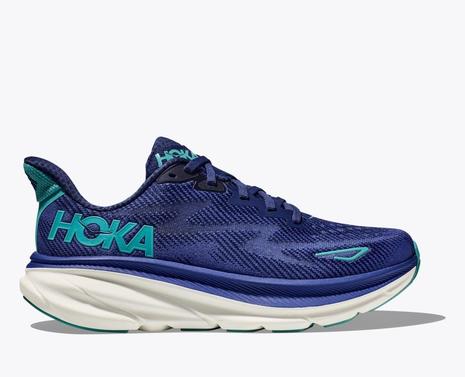
This comes as no surprise, but where the Hoka Clifton 9 shines is in the cushion. They're so soft and cushy underfoot that it feels like I could just keep running for miles without a second thought.
The Profly+ foam is lightweight (about an ounce lighter than my Nikes) but well-cushioned. This makes for cloud-like cushioning that felt just so luxurious, I wanted to keep them on even after my run.
Luxurious cushioning aside, I also enjoyed the milder rocker geometry. I've seen some Hoka running shoes that are so heavily rockered, they almost look like boats. The Hoka Clifton 9 is much more balanced. There is a gentle curve to help facilitate a smooth heel-to-toe transition, but it's not too exaggerated. It's just enough to let your foot glide easily through your stride.
Pair that balanced rocker geometry with the incredible cushioning and you get a running shoe that is just so effortless to run in. It's not the most lively or fastest running shoe on the market, but it just feels so nice on runs where you don't care about your pace.
For regular runs, I still recommend the Pegasus 41 because I had issues with the fit of the Hoka Clifton 9 upper. I also think the traction doesn't feel as good as my Nikes. It was still perfectly fine for the road. It just felt ever so slightly smoother, so I was a little less confident in my landing. At slower paces, the difference is hardly noticeable, though.
Overall, the cushy feel underfoot makes up for a lot of these issues, and the Hoka Clifton 9 definitely is going to be my go-to shoe for long, slow runs and recovery runs.
What the Hoka Clifton 9 shoes are best for:
- Long-distance runs
- Slow- to moderate-paced runs
- Recovery runs or easy, casual runs
- Runners who want maximal cushioning
- Runners who prefer a wider toe box
- Runners with neutral pronation
Shop men's sizes:
$145 at HokaShop women's sizes:
$145 at HokaBest super shoe: Nike Alphafly 3

Super shoes aren't for everyone. If you're not a competitive runner or chasing a new PB, the higher-priced racing shoes probably aren't worth it. Designed to make you faster, these shoes most often feature carbon plates and some variation of rocker geometry. That stiff plate running through the midsole isn't exactly cushy and the rocker geometry -- the curved shape of the outsole that helps your foot roll smoothly from heel to toe -- can feel unstable.
So far, the Nike Alphafly 3 is one of the most consistently top-rated super shoes on the market and from the specs, it's the one I'd run a marathon in. That's because it seems to do a great job of compensating for some of those drawbacks in super shoe technology.
The full-length carbon fiber plate is slightly wider than the one in the Alphafly 2 and has a fully connected midsole (rather than the decoupled forefoot and heel). The result is a softer, more stable ride that still delivers explosive energy return.
That balance of comfort, stability and speed is key when running a marathon. While any carbon-plated shoe is likely going to give you a speed boost, it's that added cushion and stability that will help you make it to the finish line.
What the Nike Alphafly 3 shoes are best for:
- Marathons or long-distance running
- Speed work or racing
- Competitive or metric-obsessed runners
- Runners with neutral to high arches
Shop men's sizes:
$285 at NikeShop women's sizes:
$285 at NikeBest trail running shoe: Saucony Xodus Ultra 2
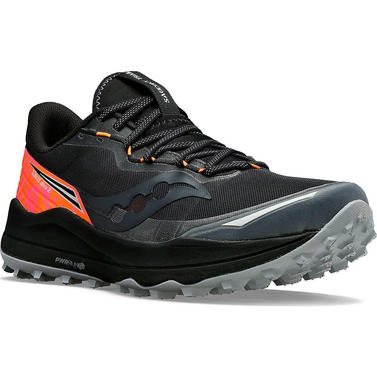
So far, I mostly stick to roads for my runs, but as someone who also hikes, I've been eager to try trail running and currently shopping for my first pair of trail running shoes. The top contender right now is the Saucony Xodus Ultra 2 because it offers a versatile, jack-of-all-trades design that works on a wide variety of terrains.
Built for ultra runners, the thick layer of foam helps cushion impact while still being light and responsive enough to allow you to build up speed. While I won't be running an ultra marathon any time soon, I like the idea of having a shoe that's comfortable without feeling too bulky to wear on longer trail runs.
The 4.5 mm lugs provide the grip you'll need on looser terrain like gravel or dirt while the multi-directional chevron shape of those lugs improves traction on smooth or slippery surfaces like solid rock. That's paired with a breathable yet snug-fitting upper that helps keep your foot stable.
As a hiker who's dealt with her fair share of pebbles and debris getting into shoes, I also like that Saucony traded the traditional tongue for a bootie-like design that wraps around your ankle to keep debris out.
If you only run on a particular kind of terrain, you might do better with a more specialized trail running shoe. But if you're looking for something that you can wear while exploring trails, the Saucony Xodus Ultra 2 has the well-rounded design to do it.
What the Saucony Xodus Ultra 2 shoes are best for:
- Mixed terrain trails or runners who want a single all-terrain shoe for exploring different trails
- Both short- and long-distance trail runs
- Slow- to medium-pace runs
- Runners with neutral pronation
Shop men's sizes:
$150 at SauconyShop women's sizes:
$150 at SauconyBest running shoe on a budget: Brooks Trace 2

Before my Nikes, I was a stubbornly cheap runner. In many ways, I still am -- just not when it comes to shoes. So if you refuse to spend over $100 on a pair of running shoes either because you're a beginner or because you just want to keep this hobby cheap, I get it.
If I could go back in time to my past self, who was running in flimsy, no-name shoes, I'd tell her to get the Brooks Trace 2. While I haven't personally tried these, they come highly recommended by budget-conscious runners. After comparing the specs to other running shoes, they look surprisingly well-built for the price point.
Weighing in at under 9 ounces, they're about the same weight as my Nike Pegasus 40s while offering a cushier midsole with a 12 mm drop (compared to the 10 mm drop on the Pegasus 40). The Brooks Trace 2 also boasts a breathable upper and impressive durability, according to reviewers.
Overall, the running shoe is comfortable enough and, reportedly, durable enough to serve as your daily trainer, and it's dropped to clearance pricing now that this year's Brook Trace 3 is out. That means you can get a pair of reliable daily trainers for just $75 (reduced from $100).
What the Brooks Trace 2 shoes are best for:
- Slow- to medium-pace runs
- Shorter distances (10 miles or less)
- Daily training or casual running
- Runners who prioritize comfort over speed
- Runners with neutral pronation
Shop men's sizes:
$75 at BrooksShop women's sizes:
$75 at BrooksNote that the Brooks Trace 3, which was released earlier this year, is also a great value at its full price of $100. But I'm recommending the Trace 2 because it's still a great running shoe with many of the same features -- all available at clearance prices. The biggest upgrade in the Trace 3 is in the foam which offers the same level of cushioning but with improved energy return, meaning an improved balance between comfort and speed.
Shop men's sizes:
$100 at BrooksShop women's sizes:
$100 at BrooksHow to buy good running shoes on a budget
As someone who's tried her fair share of sub-$50 shoes before getting a pair of Nikes, there really isn't a running shoe at that price point that can hold a candle to anything on this list. So if you're really trying to keep costs down, the trick is to shop sales.
If you're lucky, you can occasionally find deals on the latest models, but your best bet outside of seasonal sales events is to shop clearance sections for the previous year's model. Apart from years where the new version is a complete overhaul from top to bottom (as the upcoming Pegasus 41 will be), the models will be similar enough in fit and quality, but last year's model will drop to clearance prices.






